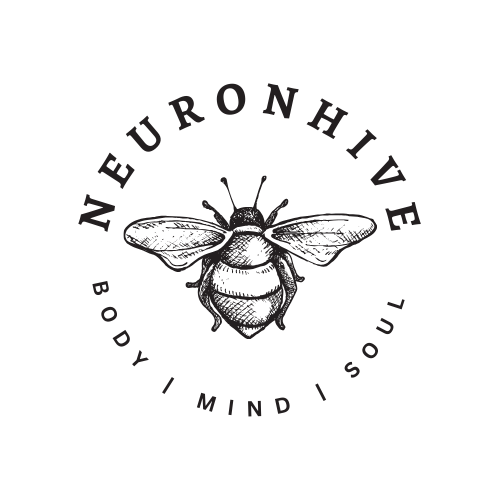Uncover the detailed pros and cons of nootropic stacking. Learn about synergistic benefits, potential risks, and best practices for combining multiple cognitive enhancers to achieve your optimal mental performance.
Nootropics, often dubbed “smart drugs” or cognitive enhancers, come in various forms—ranging from natural herbs and vitamins to synthetic compounds. While a single nootropic can yield noticeable benefits in memory, focus, or mood, many enthusiasts choose to stack multiple nootropics together.
Stacking involves taking two or more cognitive enhancers in a complementary manner, hoping to amplify their positive effects and target multiple areas of brain function at once. This approach, however, brings a range of benefits and potential drawbacks. Below, we delve into the elaborate pros and cons of multi-nootropic use, guiding you toward making an informed decision about your own cognitive enhancement regimen.
What Is Nootropic Stacking?
Nootropic stacking refers to strategically combining different nootropic supplements to address specific goals or to boost overall cognitive function. Some stacks are pre-formulated and sold as a “one-and-done” product, while others are assembled by individuals who experiment with separate supplements.
- Common Goals of Stacking:
- Enhance memory and recall
- Boost productivity and focus
- Improve mood and stress management
- Support brain health and neuroprotection
- Increase energy and motivation
Examples of Popular Stacks
- Caffeine + L-Theanine:
- Goal: Promote alertness and focus without the jittery side effects caffeine alone can cause.
- Why It Works: L-theanine, found in green tea, has calming properties that balance the stimulant effects of caffeine.
- Racetams (e.g., Piracetam) + Choline Source (Alpha-GPC or CDP Choline):
- Goal: Support learning, memory, and overall mental clarity.
- Why It Works: Racetams are believed to enhance acetylcholine usage, so adding a choline source may help prevent headaches and optimize cognitive benefits.
- Adaptogens (e.g., Rhodiola rosea) + Mild Stimulants:
- Goal: Combat fatigue and stress while maintaining steady energy levels.
- Why It Works: Adaptogens can help regulate stress responses, while mild stimulants (like green tea extract) boost energy and focus.
The Pros of Stacking Nootropics
1. Synergistic Effects
One of the main draws of stacking is the potential for synergy. In certain cases, two or more nootropics working together can produce an effect greater than the sum of their parts.
- Example: Pairing a racetam with a choline source can optimize acetylcholine levels, often leading to more pronounced improvements in memory and mental clarity than using either supplement on its own.
Why It Matters:
- Allows you to target multiple pathways (e.g., neurotransmitter modulation, blood flow, neuroprotection) at once.
- Can lead to faster, more robust cognitive improvements.
2. Broader Cognitive Support
While a single nootropic may excel at enhancing one aspect of cognition—like memory or focus—stacking lets you cover multiple bases simultaneously.
- Scenario: You might want to reduce stress (via an adaptogen), improve focus (with a mild stimulant), and stabilize mood (with an anxiolytic herb) all at once.
- Benefit: A well-designed stack can address several cognitive needs, delivering a holistic cognitive upgrade.
3. Customized Solutions
Nootropic stacking empowers users to fine-tune their regimen according to individual biology and personal goals. Everyone’s brain chemistry is unique, so the “best” stack for one person may differ for another.
- Personalization Perks:
- Adjust dosages of each component to find a sweet spot.
- Experiment with different timing (morning vs. evening) to maximize benefits.
4. Potential for Lower Individual Doses
When stacking, sometimes you can reduce the dose of each separate nootropic compared to using them solo.
- Why This Helps:
- Lower Risk of Side Effects: Taking smaller amounts of each ingredient can decrease the likelihood of adverse reactions.
- Balanced Results: You might achieve a smoother cognitive uplift rather than a pronounced spike from a high dose of one substance.
The Cons of Stacking Nootropics
1. Increased Complexity and Risk of Interactions
Multi-nootropic use invariably introduces more variables into the equation, raising the risk of unpredictable interactions.
- Hidden Pitfalls:
- Interactions may alter the desired effects.
- Certain combinations could potentially cancel each other out or lead to unwanted side effects (e.g., overstimulation, elevated blood pressure, excessive sedation).
Important Consideration:
- If you’re on prescription medications or managing a health condition, always consult with a healthcare professional before experimenting with a stack.
2. Difficulty Pinpointing What Works
A major challenge when using multiple supplements is figuring out which one is causing a particular effect—positive or negative.
- Scenario: You introduce three new nootropics at once and notice improved memory but also more anxiety. Which compound is responsible for the improvements, and which is causing the anxiety?
- Impact: Without a structured approach to isolating each nootropic, it’s tough to troubleshoot or optimize your regimen effectively.
3. Higher Cost and More Time Commitment
Stacking can become expensive, as purchasing multiple high-quality supplements adds up quickly. Moreover, managing a stack—tracking dosages, monitoring effects, adjusting protocols—requires more time and attention than simply taking one supplement.
- Financial Considerations:
- Price of each supplement
- Shipping and storage costs (especially for bulk powders or imported products)
- Time Investment:
- Researching best brands and formulations
- Logging daily intake and effects
- Adjusting dosages over time
4. Potential for Overstimulation or Other Side Effects
When multiple stimulants or anxiolytics are combined, side effects can escalate.
- Example: If you stack high-dose caffeine with other energizing substances like yohimbine or phenylpiracetam, you may experience jitteriness, palpitations, or even heightened anxiety.
- Conversely: Too many calming agents (like multiple GABAergic supplements) might induce lethargy, drowsiness, or lack of motivation.
Best Practices for Safe and Effective Stacking
1. Start With a Single Nootropic
Before building a stack, begin with one supplement at a time. This approach allows you to:
- Gauge individual responses to each nootropic.
- Identify any side effects early on.
- Establish a baseline to compare subsequent additions against.
2. Introduce New Nootropics Gradually
Add new supplements one at a time, spacing them out by at least a week or two. This method helps you pinpoint which changes in cognition or mood are due to the newly introduced substance.
3. Keep a Detailed Log
- Track: Dosages, times of day, subjective experiences (mood, focus, energy levels), and any side effects.
- Benefit: This data-driven approach makes it much easier to optimize your stack and identify problem areas.
4. Research, Research, Research
Stay informed about mechanisms, half-lives, and potential interactions. Trusted sources include:
- Peer-reviewed journals
- Nootropic community forums (with caution; anecdotal evidence can be helpful, but always verify claims)
- Healthcare professionals specialized in integrative or functional medicine
5. Cycle When Appropriate
Some nootropics may work best when cycled—taking breaks periodically to avoid tolerance buildup or receptor downregulation. Examples include high-potency stimulants or certain adaptogens.
- Cycling Schedule Example: 5 days on, 2 days off for specific compounds, or a month on, a week off—depending on the supplement and personal tolerance.
Deciding If Stacking Is Right for You
Stacking multiple nootropics is typically more suitable for individuals who have:
- Tried single nootropics and have a decent grasp of how they respond to each.
- A specific set of goals that require a multi-faceted approach (e.g., reducing anxiety while boosting energy and focus).
- The time and patience to experiment responsibly, track results, and make adjustments.
If you’re completely new to nootropics or have significant health concerns, you may want to start small—perhaps with a well-researched, pre-formulated blend or a single trusted compound—before branching into more complex stacks.
-

Which Supplements Are Good for Skin? A Comprehensive Guide
-

Can Supplements Cause Weight Gain? An In-Depth Exploration
-

What Nootropics Actually Work? An In-Depth, Evidence-Based Guide
-

Will Nootropics Fail a Drug Test? A Factual Overview
Conclusion
The practice of stacking nootropics can be both exciting and rewarding, offering the possibility of synergistic effects, broader cognitive support, and highly customized solutions. However, it also introduces greater complexity, the risk of unpredictable interactions, and can be time-consuming and costly to manage.
Key Takeaways:
- Pros
- Synergy and enhanced benefits
- Versatility to target multiple cognitive aspects
- Personalization for individual biology
- Potential for lower individual doses
- Cons
- More complex risk of interactions
- Harder to isolate which supplement is effective
- Higher costs and time commitment
- Possible overstimulation or sedation
Ultimately, whether multi-nootropic use is right for you depends on your experience, health status, and specific goals. Approach stacking with caution, thorough research, and an experimental mindset, and don’t forget to consult healthcare professionals when in doubt. With a thoughtful strategy, you can harness the power of nootropic stacks to support your quest for optimal cognitive performance.
Frequently Asked Questions (FAQ)
1. Can beginners try stacking nootropics?
Beginners can try simple stacks (like caffeine + L-theanine), but it’s typically recommended to start with a single nootropic to gauge tolerance and efficacy.
2. How long should I test each nootropic before adding another?
A common guideline is at least one to two weeks, giving you enough time to notice any significant effects or side effects.
3. Is it possible to experience withdrawal symptoms from stacked nootropics?
Some nootropics—especially those that influence neurotransmitter systems (e.g., dopamine, GABA)—could cause mild withdrawal symptoms if discontinued abruptly. Always taper off gradually if recommended.
4. What if I can’t tell which nootropic is working?
Reduce complexity by removing one compound at a time, or start your entire process over, introducing each supplement individually with proper spacing.
5. Are there any stacks that are universally beneficial?
Each person has unique brain chemistry, so there’s no one-size-fits-all. However, caffeine + L-theanine is often cited as a simple, well-tolerated combination for most healthy adults.
Disclaimer: This article is for informational purposes only and does not constitute medical advice. Always consult a qualified healthcare professional before starting or changing any supplement regimen.




